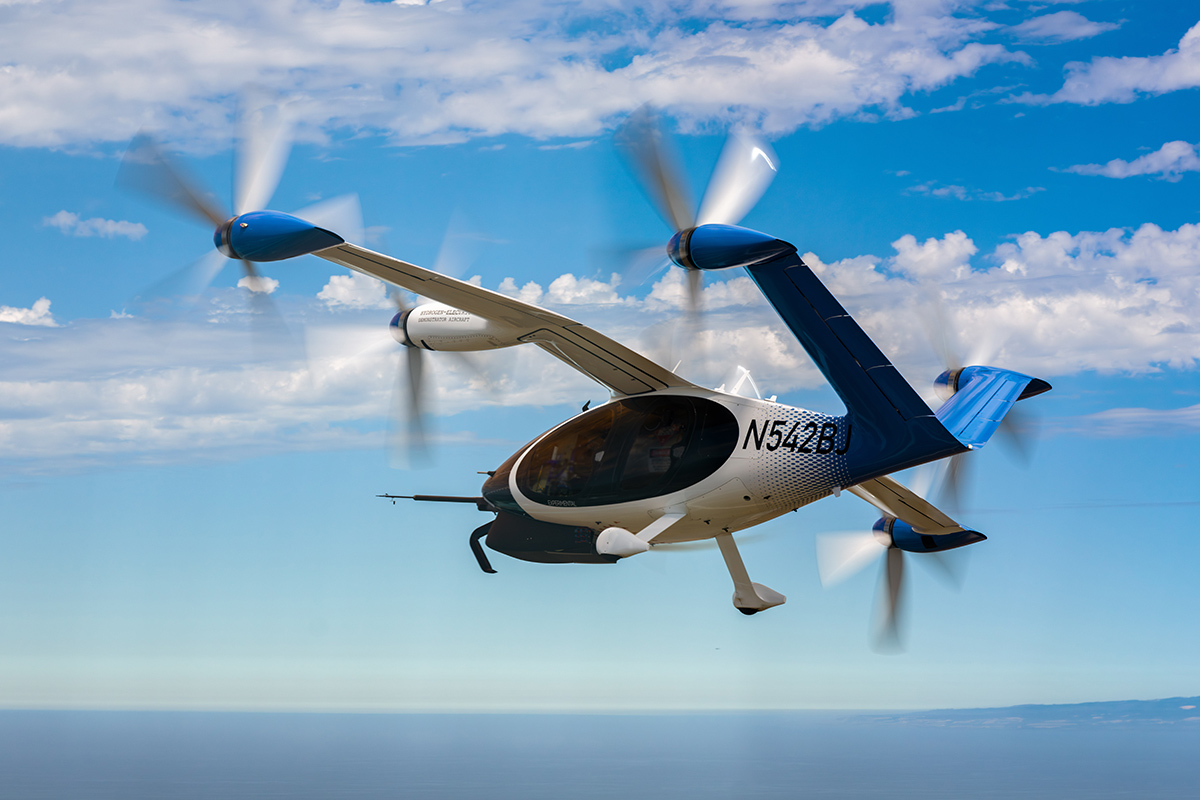A flying-car-like vertical takeoff aircraft created by Joby Aviation has completed a first-of-its-kind, 523 mile test flight using hydrogen power. The aircraft, which reportedly left only a trail of water vapor in its wake, is being pitched as a more environmentally friendly alternative to traditional gas powered jets for mid-range, regional travel. Though questions remain about hydrogen power’s long-term viability at scale, the test flight proves it’s possible to retrofit existing electric powered aircraft with hydrogen fuel cells to effectively extend their range.
Joby is one of several companies attempting to create an air taxi service around vertical takeoff and landing vehicles (VTOLs). Up until now Joby has focused on creating fully electric battery powered aircraft with a range of roughly 100 miles intended to transport people and products within cities or to major airports. For the new test flight, Joby took a pre-production prototype of one of its battery-electric aircraft and outfitted it with a liquid hydrogen fuel tank and fuel system. The modified, hydrogen-powered VTOL was able to complete a 523 mile flight above Marina, California with no in-flight emissions. When it landed, the aircraft still had 10% of its remaining hydrogen fuel load.
Joby accelerated its exploration of hydrogen power back in 2022 with its acquisition of hydrogen-powered aircraft startup H2Fly. That company completed the first piloted flight of a liquid-hydrogen powered electric aircraft last year. Since then, two other California startups have successfully tested hydrogen fuel sources to power propeller planes. One of those firms, Universal Hydrogen, reportedly flew as high as 10,000 feet at around 170 knots (195 mph.) Joby’s test flight, by contrast, is the first reported example of a VTOL-style aircraft completing a test flight using hydrogen power.
[…]
If all of this sounds too good to be true from an emissions stand point, that’s because it really still is. Hydrogen power is still far more expensive to produce than its electric or fossil fuel alternatives. It’s also not as environmentally friendly as it may initially seem. Though various energy sources can be technically used to release hydrogen from hydrocarbon molecules, around 95% of hydrogen currently produced in the US is made using natural gas which is itself a major source of CO2 emissions. So-called “green hydrogen” sourced from renewable resources remains relatively rare but that could change thanks to the Biden Administration initiative aiming to inject $7 billion into new hydrogen hub centers. Hydrogen power, not long ago considered a sci-fi pipe dream, is climbing closer to reality.
Hydrogen is also just one of several alternatives and options being explored by the air travel industry. Aircraft startups like Elysian are leaning on advances in battery technology to develop an electric-powered passenger plane they hope can transport 90 travelers up to 500 miles without recharging. Jet Blue, Virgin Atlantic, and other airliners are also investing in so-called “sustainable jet fuel” which would use feedstocks, waste products, and other renewable starting materials in place of fossil fuels. Some mix of all of these alternatives will likely be needed to prevent aircraft related carbon emissions from soaring in coming years, especially as passengers show no signs of cutting down on overall air travel any time soon.
Source: A hydrogen-powered air taxi flew 523 miles emitting only water vapor | Popular Science

Robin Edgar
Organisational Structures | Technology and Science | Military, IT and Lifestyle consultancy | Social, Broadcast & Cross Media | Flying aircraft

